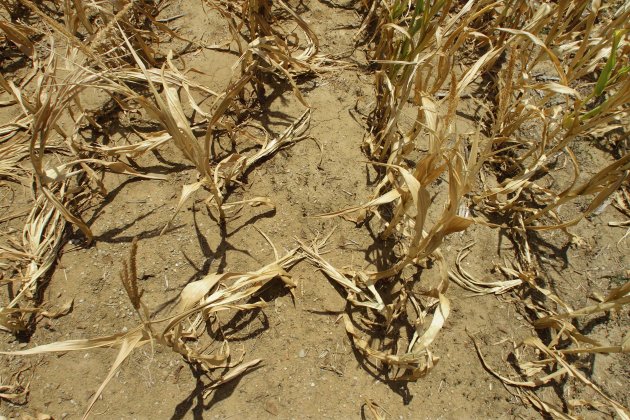
Williams ended up with about two-thirds of the crop he expected, and a U.S. Department of Agriculture report
released Friday showed most corn farmers didn't fare much better. The
final report on the 2012 growing season showed farmers harvested 10.78
billion bushels of corn, less than three-fourths of what the agency
predicted last spring.
While the report covers many other crops, much of the attention has
been on corn, which is widely used as an ingredient in many foods,
provides feed for livestock and is mixed with gasoline as ethanol. The
crop also was the hardest hit by the drought that settled in just as the
plants were maturing.Williams, 62, usually gets 150 to 160 bushels per acre on his 1,000-acre farm near Rockford in northern Illinois. Last year, he got about 100, and he's been looking at the sky ever since, hoping for heavy rain or snow to break the drought that still grips the region.
"I've yet to run into anyone around me that wasn't ready for 2013 to come," he said.
Yet things could have been worse.
Because demand remained strong and corn prices remained high — above $7
a bushel for much of the summer and fall — the 2012 crop was the most
valuable ever produced, with a value of around $85 billion, said Chad
Hart, an agriculture economist with Iowa State University.
The harvest also was the eighth largest in U.S. history, a reflection
of a big increase in recent years in the number of acres planted and
crop technology that has improved plants' ability to withstand drought."We learned that corn plants can build roots very, very deep," said Brent Wilson, technical services manager for DuPont Pioneer, a major seed company.
In some areas, farmers got yields that require 40 percent more water than was available in the top few feet of their soil, Wilson said. That means plant roots were driven deeper to reach the subsoil.
While the drought eventually
spread to cover two-thirds of the nation, its impact varied widely from
one region of the corn belt to another. Some Iowa farmers saw decent
results, while those in parts of Illinois and Indiana could only watch
as plants withered and died after months of drought.
Friday's reports showed that Illinois, typically the nation's second-largest corn producer, fell to fourth place behind Iowa, Nebraska and Minnesota.
Iowa, coming off of its driest
year since 1989, remains the largest corn producer with 1.87 billion
bushels, down 20 percent from the year before. Minnesota was second with
1.37 billion bushels, followed by Nebraska with 1.29 billion and
Illinois with 1.28 billion.
Corn production in Illinois fell
34 percent from 2011 and Nebraska's production was off 16 percent.
Minnesota, where the drought was not as severe as in other states,
produced 14 percent more corn last year than the year before.
The USDA had predicted a record
average yield of 166 bushels per acre of corn when warm weather got
farmers in the fields early. But the government began scaling back
estimates as the drought spread across two-thirds of the nation. The
year-end average was 123.4 bushels per acre.
While Williams and other farmers
were eager to say goodbye to last year, they still have reason to be
anxious. The U.S. Drought Monitor's weekly updates have shown few signs
the drought is relenting. Sixty percent of the continental U.S. is still
in some form of drought, and climatologists say it would take an absurd
amount of snow for conditions to change much during the winter.
"For us, winter's just not a time
of year to make much progress with drought," said Harry Hillaker,
Iowa's state climatologist. "Our next hope is a wetter spring."
And even that wouldn't guarantee
an end to drought, Hillaker said: "In a nutshell, one hot, dry summer
tends to be followed by another year on the dry, warm side of normal."

No comments:
Post a Comment